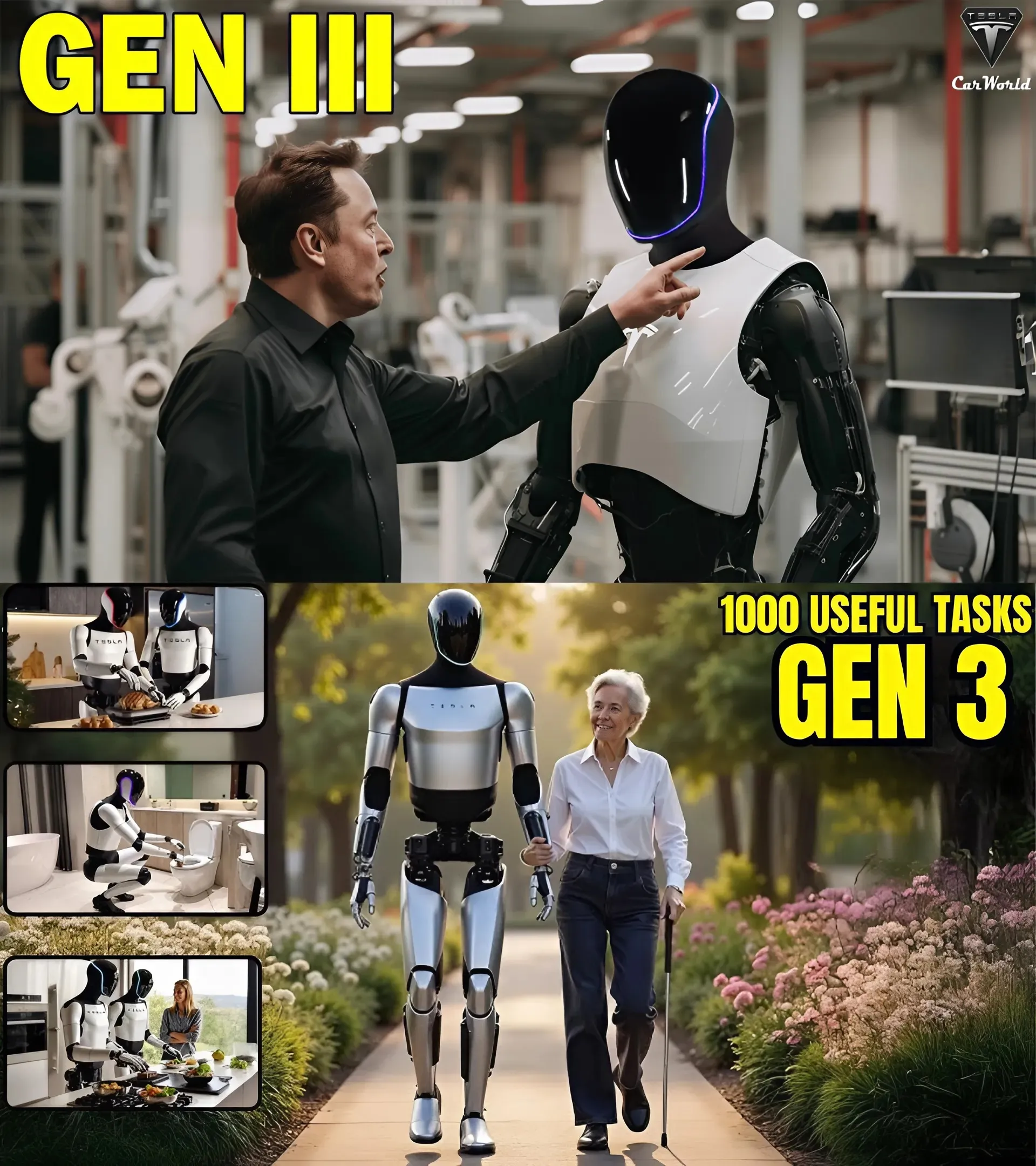In a world where science fiction is gradually becoming reality, the name Elon Musk once again makes humanity amazed. Not only conquering space with SpaceX, revolutionizing transportation with Tesla or changing the renewable energy business model, Elon Musk is now gradually realizing an idea that seems to only exist in Hollywood movies: connecting the human brain with robots through Neuralink and Optimus.
Since founding Neuralink in 2016, Elon Musk has continuously conveyed a clear message: the human brain is the key to unlocking the future of artificial intelligence, and connecting them with machines will open a new era for humanity. But not stopping at the theoretical concept, Musk is gradually making it a reality - and that is when Optimus, the humanoid robot developed by Tesla, appears.
Optimus was originally introduced as a robot that could help with simple tasks, from carrying heavy objects to helping with housework. However, when combined with Neuralink – a chip implanted in the human brain that can send and receive neural signals – Optimus’s capabilities suddenly took on a whole new level. Imagine: instead of having to give verbal commands or control electronic devices, you just have to think – and Optimus will understand and act immediately.
It is no exaggeration to say that this is a revolutionary step in the history of technology and medicine. Elon Musk once asserted that, "Neuralink is a bridge between humans and artificial intelligence. It will not only help treat neurological diseases but also open the door to the integration of biological intelligence and machines." In the first testing phase, Neuralink was implanted in the brain of a paralyzed patient and this person was able to control a computer cursor with just his thoughts – a clear demonstration of the enormous potential of this technology.
VIDEO :
But Elon Musk doesn’t stop at helping the sick. He wants more. He wants to turn humans into true “cyborgs” – human-machine hybrids that can communicate with robots and AI seamlessly, directly, without any intermediary devices. And that’s where the controversial future begins.
The combination of Neuralink and Optimus raises a big question: is this the beginning of an era where humans will surpass their own biological limitations, or is it the first step towards a dangerous dependence on technology? On the one hand, this could help the disabled walk, the mute talk, and open new doors for industries from medicine to manufacturing. But on the other hand, if humans can connect directly to machines, the issues of privacy, control, and technological ethics will become more urgent than ever.
Some scientists and technology experts have spoken out to warn. They argue that “reading” human thoughts, whether to control robots or communicate with AI, will have a series of complex consequences. Can someone hack into your brain? Can your thoughts be monitored or controlled remotely? Will you still be you if your mind can be shared with a machine? These questions are not new – they have appeared in dystopian novels – but now, they are no longer science fiction.
However, Elon Musk sees the problem from a different perspective. He believes that AI will develop to the point of surpassing humans in every way, and without a deeper interactive connection mechanism – like Neuralink – humanity will be left behind. According to Musk, “we can’t fight AI – we have to merge with it.” And that is why he created Optimus – a symbol of helpful, friendly AI that can work alongside humans instead of replacing them.
It's also worth remembering that Elon Musk isn't one to give up easily when criticized. He was once skeptic when he said he would send rockets into space, but SpaceX did it. He was laughed at when he talked about global electric cars, and now Tesla is one of the most valuable car companies in the world. So when he says the future is connecting human brains to robots, maybe we should listen a little more carefully.
Currently, the development of Neuralink and Optimus is still going strong. Neuralink has been granted FDA approval for clinical trials, and Optimus is becoming more flexible and responsive with each update. In a recent demonstration, Optimus demonstrated the ability to automatically fold clothes - a seemingly simple action but requiring sophisticated motor coordination that few robots can do today. When connected to Neuralink, the ability to interact with human "thoughts" will turn Optimus into a real friend, a companion in the near future.
No one knows exactly when the fusion of human brains and robots will become commonplace. It could be 10 years, it could be 20. But one thing is certain: Elon Musk is accelerating the process faster than anyone else. And when it does, the world will never be the same. There will be heated debates about ethics, control, and even human rights. But there will also be new hope for those who are paralyzed, have neurological damage, or simply want to push their limits.
The new reality is knocking. The question is: are you ready to think with your brain—and act with a robot? Elon Musk is certainly ready. And the future is calling, once again.




